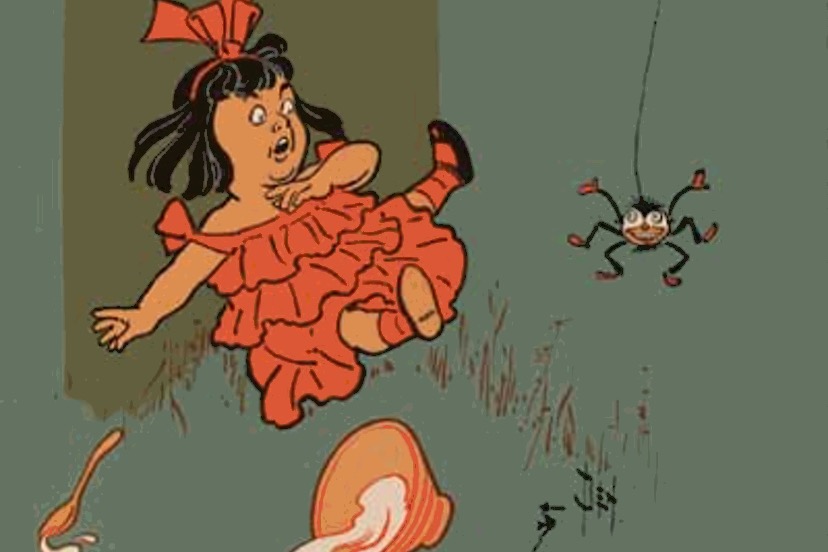I was thinking about researching an essay about “planned economies” for this week’s Daily Post, from the perspective of a person who has never planned anything successfully. It seems to me that the amazing progress in bringing the human race out of the Stone Age over the past 4,000 years, and into an age of abundance and health, can be credited mainly to “planned economies.”
But then I decided not to do the research, after all. I was afraid of what I might find out.
We have a lot to be fearful about, in the summer of 2020. Germs. Permanent economic devastation. Climate change. Creeping fascism. Suffocation due to excessive mask wearing. Fear of robots taking over my job.
And spiders.
The fear of spiders — known among psychologists as ‘arachnophobia’ — has been around for a lot longer than the fear of microscopic germs (sometimes referred to as ‘verminophobia’ or ‘spermatophobia’), although psychologists can’t agree on why so many people are deathly afraid of spiders, considering that most of them are absolutely harmless, and even kind of cute. (If you squint and don’t look directly into their eight beady eyes.)
For that matter, even most germs are relatively harmless, although very few could be considered ‘cute.’
We don’t all harbor the same (often irrational) fears. And that’s probably a good thing. We wouldn’t want everyone to be suffering from ‘claustrophobia’ for example, or else we’d have millions of elevators that never get used.
Some people people smarter than me have collected lists of the fears that plague humankind. Here’s a website that includes an inventory of 537 phobias, listed in alphabetical order by their Latin names:
We ought to keep in mind that phobias are perfectly normal, and some are even healthy. The fear of clowns — coulrophobia — is an example of a healthy fear. Another example would be francophobia — fear of anything French. A hefty dose of francophobia would have served the English well in 1066 AD.
Other phobias are perhaps less helpful, and also less practical. For example:
Ablutophobia
Fear of washing or bathing.
Arachibutyrophobia
Fear of peanut butter sticking to the roof of the mouth.
Genuphobia
Fear of knees.
Hippopotomonstrosesquipedaliophobia
Fear of long words.
Metrophobia
Fear of poetry.
Omphalophobia
Fear of belly buttons.
Vestiphobia
Fear of clothing.
As far as I can tell, the above short list refers to actual phobias that have been diagnosed by mental health experts. The usual treatment involves ‘exposure therapy’ where the person is introduced repeatedly (and hopefully, gradually) to the situation or object in question until the fear resolves itself. Medications are not useful when using this method to treat phobias, although a couple of good, stiff drinks might be called for now and again — especially when undergoing treatment for a fear of belly buttons.
Researchers have estimated that about 1-in-4 women suffer from some type of diagnosed phobia, while the number of men presenting with a phobia is more like 1-in-8. The difference is attributable to the most common phobia suffered by men: the fear of admitting that you have a phobia.
Looking through the Phobia List (linked above) I was unable to find a documented phobia related to the fear of wearing a cheap paper surgical mask that’s been knocking around on the floor of your car for the past several weeks, but I suspect that will be added to the list in the near future.
And just to be perfectly clear, I’m not actually afraid of robots taking over my job. If they want it so badly, they’re welcome to it. I can do better things with my time, like getting over my ablutophobia.


